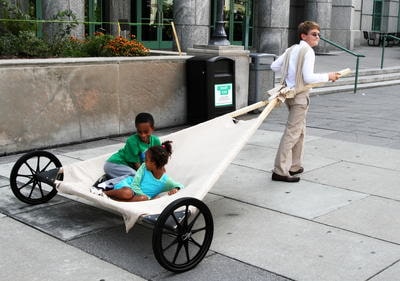A friend of mine had some questions about food, and this reminded me of a section in Robert DePugh’s book “Can You Survive?”. DePugh was on the run for seventeen months and estimates about twelve of these were spent in the American wilderness. This book was written after this and his insights into what was and was not useful makes interesting reading:
“Clothing has already been mentioned and the first aid kit will be considered in a following chapter. This leaves a long list of items that might be labelled “miscellaneous.”
In our previous list, we included a nylon cord. This item I would still retain but not more than 20 or 30 feet. A climbing rope is nice to have if several members together are working their way through mountainous terrain but unless some definite need is anticipated, I would leave such heavy and cumbersome items at home.
In our previous list of materials for the backpack we included such food items as these: dehydrated meals for at least 14 days, boullion cubes [sic], coffee or tea, sugar, salt and pepper, vitamins, halazone tablets, malt tablets and chocolate. Of all these items only one that I would include in a backpack survival ration today would be the halazone tablets—but I would include an abundant quantity of them. The dehydrated foods are fine so far as weight is concerned but I am more convinced than ever that cooking must be kept at an absolute minimum. There are times perhaps when it may be essential to cook certain vegetable items to guard against toxic substances or to cook animals that have been captured and might be infected by some disease. Except for these necessary occasions, even the smallest fire places such a traveller in great danger of being discovered by the enemy. For these reasons, the coffee, tea and boullion cubes are also out. Sugar can best be carried in the form of candy that cannot be spilled or be easily ruined by moisture. Most medical authorities agree that the American people eat more salt than is healthy for them. Ordinary foods contain all of the salt that a person normally needs for good health. Pepper, of course, is one of those niceties of civilization that are best left behind along with your cigarettes and pipe.
Of those foods that are readily available, the best in my opinion for emergency survival rations would include canned meats and cheese, peanut butter mixed with sugar packed in plastic containers, and various types of candy that are customarily sold in small pieces and in plastic bags. All of these items are very low in water and therefore contain a high proportion of nutritive value and they can be eaten with knife and fingers out of the container in which they are carried. For the person who may be required to flee for his life at any time, survival foods beyond the amount he can carry in his pack are a very dubious investment.
Our previous equipment list also included several items for cooking such as a nesting set of cooking utensils, heat tabs or sterno, knife, fork and spoon, plate, cup and scouring pad. Of these I would make do with my canteen, canteen cup and a good hunting knife. Such cooking as may be essential can be done in the canteen cup. If you know where to look, tinder is always available for starting fires. Sand can be used to clean your canteen cup thus eliminating the scouring pad. Under desperate circumstances, good table manners do not justify the extra weight of a fork and spoon.
Other items from our previous list which I would now eliminate include candles, shovel, ax, wire, rubber tubing, folding saw, pliers, wirecutter, screwdriver and file. Items which I would retain include matches in a waterproof container (I'd carry along a lot of these); a flashlight is good so long as the batteries will last; a sharpening stone is worth the weight; compass, maps, ground cloth, thread, safety pins, needles and extra buttons are well worthwhile but since they weigh very little a few fish hooks, line and sinkers might be included though I have grave doubts as to their practical value. Except in the high mountains I would say that a good insect repellent is worth its weight in gold.
A small towel or washcloth has many uses that justify the weight involved. Soap and toothbrush are essential. For men, a razor and blades may be necessary to avoid looking conspicuous on those occasions when contact with other civilians is unavoidable. Other desirable miscellaneous items include a small magnifying glass, paper and pencils.
The dangers of shooting or trapping wild animals while trying to evade hostile forces has already been referred to. In this regard a good slingshot might be worthwhile in killing small game silently as the opportunity presents itself. In capturing wild game, beware of those animals that are caught too easily. They may be diseased and therefore, unsafe to eat without cooking.”
These probably do not have the shelf-life of peanut butter and sugar but can be used on shorter trips.
























